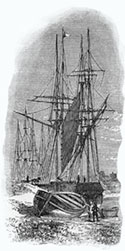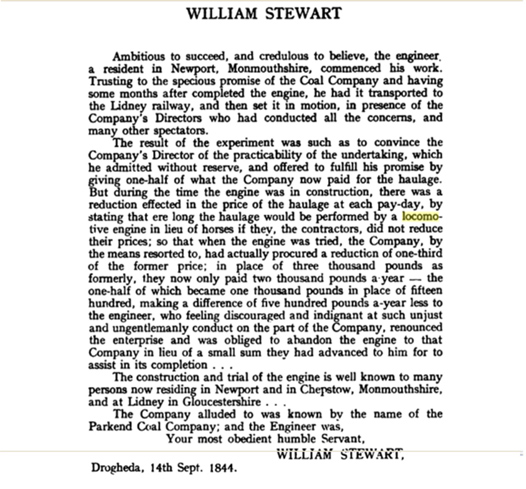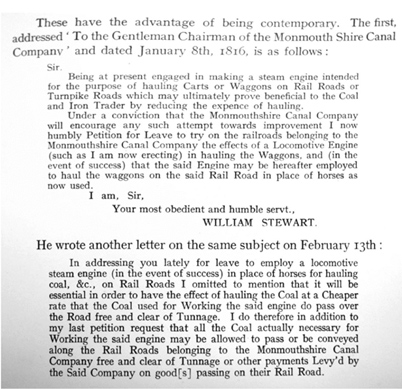Maritime History of Newport
By Peter Brown
© Peter Brown 2024
William Stewart - Newport’s steamship pioneer
In the early 19th century, a Newport man was a leading promoter of steam engines for railway engines, road vehicles and steamships, yet little is known about his background or his other work. In 1819, he was referred to as a civil engineer and millwright in partnership with John Ramsden, “in the firm of Stewart and Ramsden”, when he agreed to carry on the future business alone.[1]
He first appears in documentary evidence in 1814, when the Parkend Coal Company in the Forest of Dean engaged him to make a railway locomotive to do the work of the horses. This was independent of the work of George Stevenson already underway in the north. In return, Stewart would receive payment of half of the sum they were paying for horse transport. The engine was transported to Lydney railway, where it was demonstrated to the company's satisfaction. However, the company had been holding talks with the horse transport company, which agreed to lower their charges, and as a result, the contract with Stewart was cancelled.[2]
Years later, in 1844, Stewart published his version of the events:[3]
Stewart walked out, removing his locomotive from the railway and returning it to Newport. Two years later, in 1816, Stewart wrote two letters[4] (in January and February) to the Monmouthshire Canal Company:[5]
It is unclear whether the steam engine he was “engaged in making” was the one from Lydney or a new one, and there is no evidence that this proposal progressed. What is remarkable is the reference to “hauling Carts or Waggons on Rail Roads or Turnpike Roads”, mimicking the ideas of Trevithick just over a decade earlier.
Undeterred by another lack of success, Stewart switched his attention from steam locomotives to steamships, where others had already shown the way forward. The American Robert Fulton visited some experiments on steamboats in Scotland in 1803 and built a design based on his observations. He shipped a 24-horsepower Boulton and Watt engine to New York in 1807, where he built his North River Steamboat, considered the world’s first commercially successful steamboat, which transported passengers along the Hudson River.[6]
Stewart submitted a detailed proposal to the people of Newport in 1816 for constructing a steamship to travel between Newport and Bristol, and the proposal is presented here in full:[7]
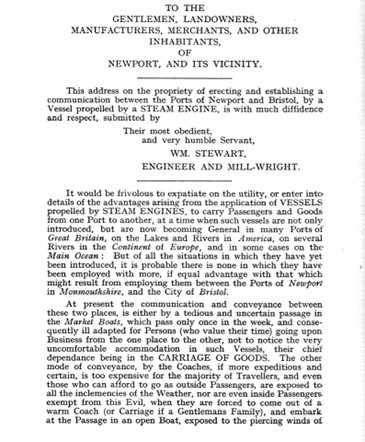
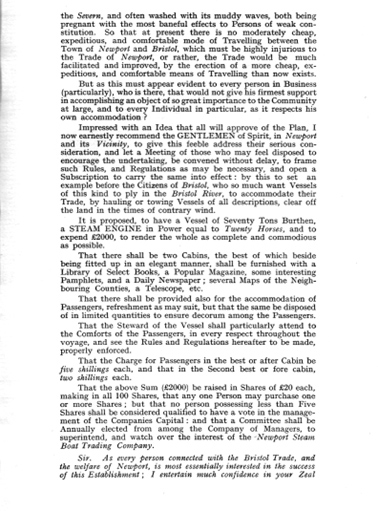
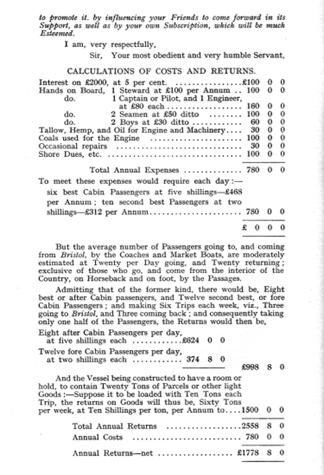

It is unclear whether this plan ever progressed, but Stewart’s proposal seems to have foretold the success of the Bristol Packet service that became a regular feature in 1822 with the Bristol-owned Cambria, which provided a daily passenger service between Newport and Bristol. The following year saw the introduction of the Lady Rodney (just over 58 tons), built in Liverpool for a company of businessmen in Newport and Pontypool. Her master was William Young, and she carried a crew of eight for her 12 trips per week in the summer (six in winter) that took 4½ hours on a typical journey. The Lady Rodney operated for 31 years.[8]
In summary, this is an extraordinary story of a Newport man who designed and built steam locomotives independently of George Stephenson. Stewart was thinking about steam engines for road vehicles and railways – a direct parallel with Trevithick, who experimented on the road before the famous rail success at Pennydarren in 1804. The crossover from rail to ship is again extraordinary for the date. To people like Brunel, building railway engines and steamships was an effortless transition, but that was a later generation where the steam engine was firmly established.
It appears that Stewart was one of the many unsung heroes in industrial history and a prophet before his time. Had he succeeded with his plans, Newport might have been at the forefront of developing steam locomotives and steamships. As it is, he is someone largely unknown and unappreciated, even in Newport.
References
1 Law Chronicle, Commercial and Bankruptcy Register, 1 February 1816. Found at FindMyPast website.
2 Farnworth, Roger (2019) A First Steam Locomotive for the Severn and Wye Tramway?
Online at: https://rogerfarnworth.com/2019/02/08/a-first-steam-locomotive-for-the-severn-and-wye-tramway/
3 Marshall, Chapman Frederick (1953) A History of Railway Locomotives down to the End of the Year 1831, 100.
4 The original letters are preserved at TNA RAIL 1014/4/28.
5 Grace’s Guide to British Industrial History, ‘William Stewart’,
Online at: https://www.gracesguide.co.uk/William_Stewart
6 https://www.britannica.com/biography/Robert-Fulton-American-inventor
7 Dawson, J. W. (1932) Commerce and Customs: A History of the Ports of Newport and Caerleon, 58-61.
Online at: https://archive.org/details/commerce-and-customs-newport
8 Dawson, 61.
Back to Index of Peter Brown's "Maritime History of Newport "

